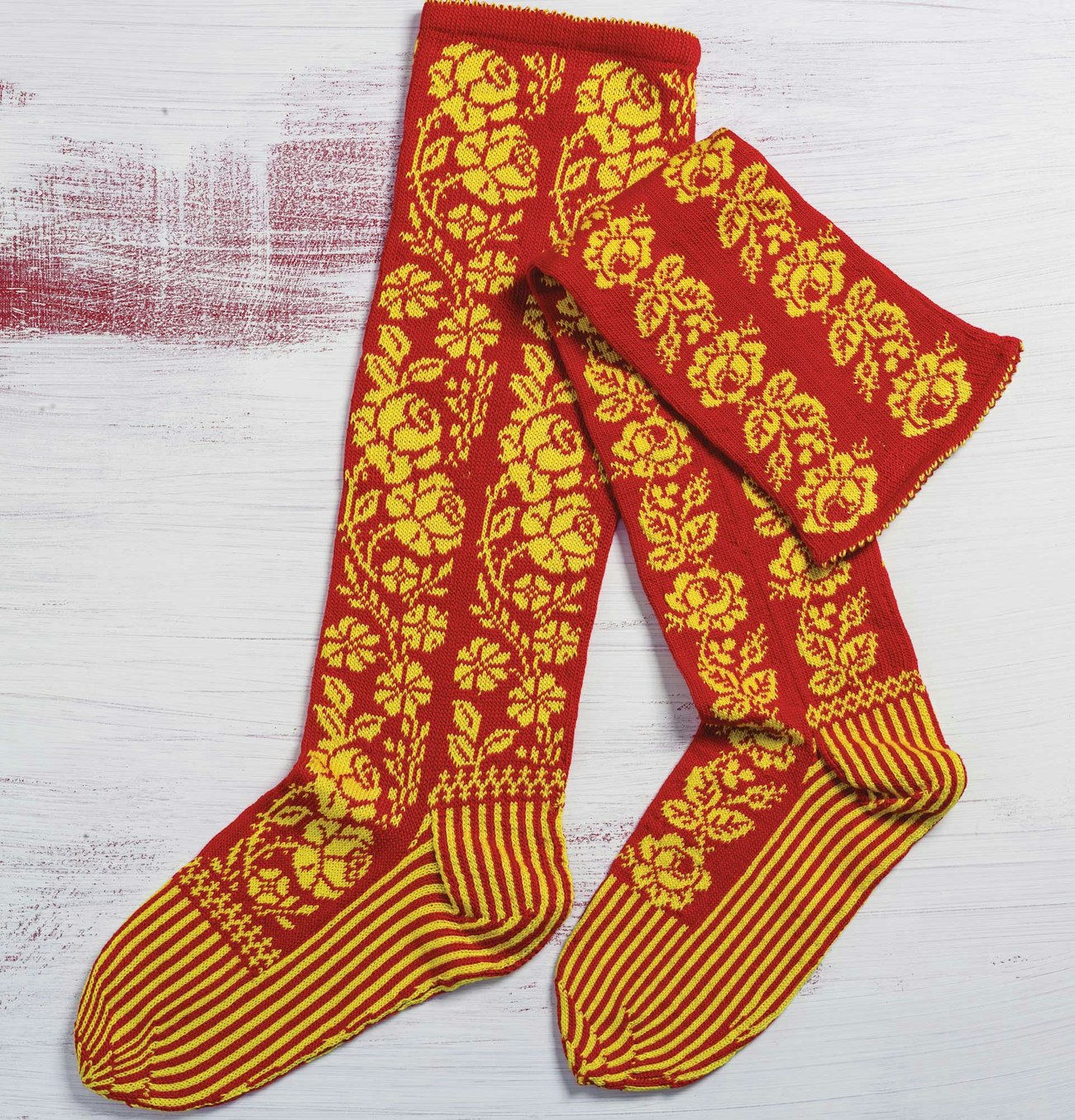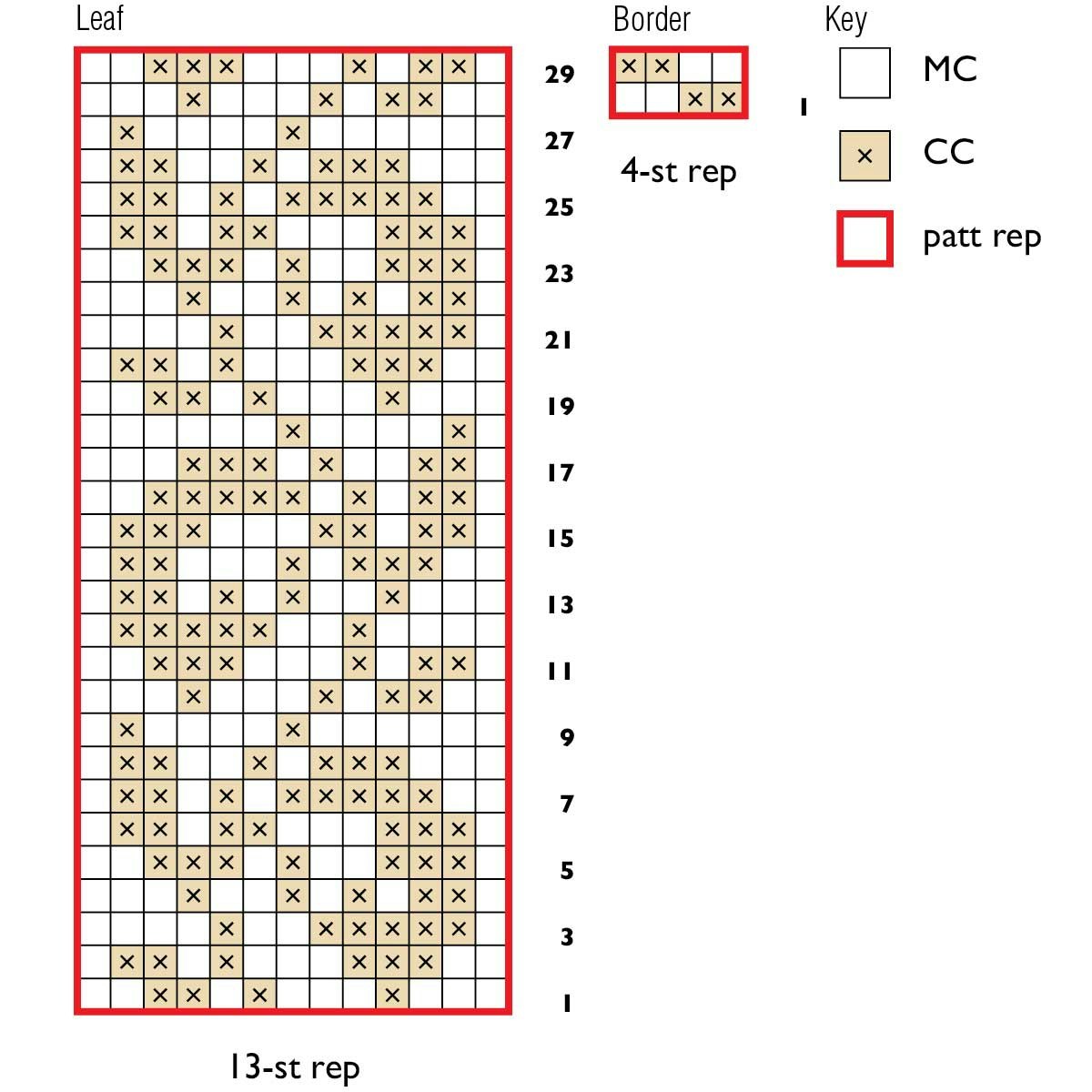Subscriber Exclusive
Portuguese Socks from Serra D’Ossa
Andrea Wong’s miniature Portuguese stocking, from the January/February 2017 issue of PieceWork, is based on socks in the classic style of those from Serra D’Ossa, Portugal.
Andrea Wong’s miniature Portuguese stocking, from the January/February 2017 issue of PieceWork, is based on socks in the classic style of those from Serra D’Ossa, Portugal. <a href="https://pieceworkmagazine.com/portuguese-socks-from-serra-dossa/">Continue reading.</a>
https://pieceworkmagazine.com/cdn-cgi/image/format=auto/https://www.datocms-assets.com/75076/1656659218-portuguese-socks-2.jpg?auto=format&w=900
Serra d’Ossa is at an elevation of 2,142 feet (653.0 m) above sea level in the Alentejo region of Portugal between Estremoz and Redondo. (The origin of the region’s name, além and Tejo combined as Alentejo, literally translates to “beyond-the-River Tagus” or “across-the-River Tagus.”) This region is famous for crafts: The people produce bricks, furniture, rugs, shawls, and more. Although the beautiful rugs called Arraiolos have increased tourism in the area, in contrast, some other crafts have been almost forgotten.
Among those almost forgotten crafts are the exquisite handknitted socks produced in Serra D’Ossa. In the past, these ethnic socks were part of a costume worn by the women on festive occasions such as Carnival. They were finely decorated with detailed flower motifs and bright colors, usually bright red and yellow. As cheaper machine-made socks became available in this area, fewer people were interested in knitting the socks and keeping this tradition alive.
I first read about these socks on Rosa Pomar’s blog. As she fell in love with them, so did I. Rosa lives in Lisbon and had the opportunity to visit the village and talk to the small group of knitters who are still knitting these socks. She has published more information about these socks in her book Malhas Portuguesas: História e prática do tricot em Portugal [Portuguese Knitwear: History and Tricot Practice in Portugal].
SUBSCRIBER EXCLUSIVE
Serra d’Ossa is at an elevation of 2,142 feet (653.0 m) above sea level in the Alentejo region of Portugal between Estremoz and Redondo. (The origin of the region’s name, além and Tejo combined as Alentejo, literally translates to “beyond-the-River Tagus” or “across-the-River Tagus.”) This region is famous for crafts: The people produce bricks, furniture, rugs, shawls, and more. Although the beautiful rugs called Arraiolos have increased tourism in the area, in contrast, some other crafts have been almost forgotten.
Among those almost forgotten crafts are the exquisite handknitted socks produced in Serra D’Ossa. In the past, these ethnic socks were part of a costume worn by the women on festive occasions such as Carnival. They were finely decorated with detailed flower motifs and bright colors, usually bright red and yellow. As cheaper machine-made socks became available in this area, fewer people were interested in knitting the socks and keeping this tradition alive.
I first read about these socks on Rosa Pomar’s blog. As she fell in love with them, so did I. Rosa lives in Lisbon and had the opportunity to visit the village and talk to the small group of knitters who are still knitting these socks. She has published more information about these socks in her book Malhas Portuguesas: História e prática do tricot em Portugal [Portuguese Knitwear: History and Tricot Practice in Portugal].
[PAYWALL]
To truly appreciate these socks, you need to understand their complex construction. They are knitted in cotton, a fiber that lacks the elasticity of wool. You will need to knit many gauge swatches to get them the right size. The gauge varies between 12 to 14 stitches per inch (about 5 to 6 stitches per centimeter). The socks are knee high, worked from the cuff down, knitted on a set of five very fine knitting needles with hooks at one end. The knitter purls around with the public side facing.
The inspiration for the patterns comes from filet-crochet charts, and the motifs include flowers, such as roses and marigolds, or geometrical motifs. The patterns are worked vertically and use the stranded-knitting technique with two colors per round. Although red and yellow are the most popular colors, the Metropolitan Museum of Art in New York has an example of these socks worked in black and pale blue. Even though the socks are exquisite examples of handknitting, only two other sources mention them: one is the book Artes e Tradições de Évora e Portalegre [Arts and Traditions of Évora and Portalegre] published in 1980; the other is an article about Portuguese crafts in a 1977 issue of the French magazine 100 Idées.
My friends in Portugal have contacted Doña Maria da Luz Pereira and her mother, Doña Maria Felismina Pereira, in the Redondo area. Doña Felismina is one of the few knitters alive today who keeps this tradition going. She is the knitter who produced the samples shown above. Both are made of fine cotton in the typical colors of red and yellow, with rose patterns shown vertically. The socks are not a pair, though they are similar. If you look at them closely, you see that one is longer than the other and that the motifs are different. Each sock has four vertical panels with flowers on them, and the legs are shaped to the contour of the calf, decreasing in diameter toward the ankle. The heel flap is knitted and striped. The flower motifs continue halfway across the top of the foot, where they meet the stripes from the bottom of the foot. The toe is the Portuguese Spiral Toe that I describe in my book Portuguese Style of Knitting: History, Traditions and Techniques.
The more that people appreciate this traditional knitting, the less likely it is that the tradition will be forgotten. My hope is to bring wider attention to these true works of art, to showcase their quality and patterns, and to get knitters around the world interested in learning about these socks for generations to come.

Doña Maria Felismina Pereira knitted these strikingly beautiful examples of traditional Portuguese socks. Both are made of fine cotton in the typical colors of red and yellow, with rose patterns shown vertically. The socks are not a pair, though they are similar.
Instructions follow for knitting a miniature Portuguese stocking from Serra D’Ossa with a Portuguese Spiral Toe, based on socks made by Doña Maria Felismina Pereira.
Further Resources
- Artes e Tradições de Évora e Portalegre [Arts and Traditions of Évora and Portalegre]. Lisbon: Terra Livre, 1980.
- “Les Travaux et Les Jours” [Works and Days]. 100 Ideés, July 1977.
- Overby, Charlotte. “Stitching across Centuries: The Carpets of Arraiolos, Portugal.” PieceWork, September/October 1999.
- Pomar, Rosa. Malhas Portuguesas: História e prática do tricot em Portugal [Portuguese Knitwear: History and Tricot Practice in Portugal]. Porto, Portugal: Civilização Editora, 2013.
- Rosa Pomar’s blog, www.aervilhacorderosa.com
- Wong, Andrea. Portuguese Style of Knitting: History, Traditions and Techniques. Powell, Ohio: Andrea Wong Knits, 2010.
- —. “The Portuguese Style of Knitting.” PieceWork, January/February 2009.
Materials
- Regia 4-ply, 75% wool/25% polyamide yarn, fingering weight, 230 yards (210.3 m)/50 gram (1.8 oz) skein, 1 skein each of #2054 Bright Red and #2041 Yellow
- Needles, size 0 (2 mm) or size needed to obtain gauge
- Markers
- Tapestry needle
Finished size: 5 inches (12.7 cm) foot circumference, 4¾ inches (12.1 cm) foot length
Gauge: 41 sts and 56 rnds = 4 inches (10.2 cm) in St st
Instructions
Notes: See pieceworkmagazine.com for Abbreviations and Techniques.

Stocking
Cuff
With MC and using the long-tail method, CO 52 sts. Pm and join in the rnd, being careful not to twist sts.
Rnds 1–5: K.
Rnd 6 (Picot Rnd): Yo, k2tog; rep from * to end of rnd.
*Rnds 7–11: K.
With WS tog, fold work along Picot Rnd.
Rnd 12 (Joining Rnd): *K 1 st from left needle tog with 1 st from CO edge; rep from * to end.
Leg
Work Rows 1–29 of Leaf Chart. With MC, k 4 rnds. Work Rows 1 and 2 of Border Chart. With MC, k 4 rnds.
Heel Flap
Heel flap is worked back and forth on 1st 26 sts of rnd; last 26 sts of rnd will be worked later for instep.
Row 1 (RS): With CC, sl 1 pwise, k25.
Row 2 (WS): With CC, sl 1 pwise, p25.
Row 3: With MC, sl 1 pwise, k25.
Row 4: With MC, sl 1 pwise, p25.
Rep last 4 rows until heel flap measures about 1 inch (2 cm), ending with a RS row.
Turn heel,
With MC only,
Row 1 (WS): P15, p2tog, p1, turn.
Row 2 (RS): Sl 1 pwise, k5, ssk, k1, turn.
Row 3: Sl 1, p to 1 st before gap, p2tog, p1, turn.
Row 4: Sl 1, k to 1 st before gap, ssk, k1, turn.
Rep last 2 rows 3 more times—16 heel sts rem.
Gusset,
Beg with MC, alternate 2 rnds MC and 2 rnds CC for gusset and foot.
Set-Up Rnd: Pick up and k 7 sts along side of heel flap, pm, k26 instep sts, pm, pick up and k 7 sts along side of heel flap, k8 heel sts—56 sts total; rnd beg at center of heel.
Rnd 1: K to 3 sts before m, k2tog, k1, sl m, k to m, sl m, k1, ssk, k to end—2 sts dec’d.
Rnd 2: K.
Rep Rnds 1 and 2 once more—52 sts rem. Remove all ms except beg-of-rnd m.
Work even in stripe patt until foot measures 3¾ inches (9.5 cm) from back of heel.
Spiral Toe
With MC only,
Set-Up Rnd: K2tog, k11, pm; rep from * 3 more times—48 sts rem: 12 sts between each of 4 ms.
*Note: Decrease Round shifts all markers, including beginning-of-round marker.
Dec Rnd: *Remove m, k1, pm, k2tog, k to m; rep from * 3 more times—4 sts dec’d.
Rep Dec Rnd every rnd 9 more times—8 sts rem: 2 sts between ms.
Finishing
Cut yarn, leaving a 5-inch (12.7-cm) tail. Thread tail through remaining stitches, pull tight to gather, and fasten off on wrong side. Weave in loose ends. Block to measurements.
Andrea Wong teaches knitting and crochet weekly in Powell, Ohio, and travels throughout the United States and Canada for classes and workshops. Andrea learned to knit from her mother when she was seven years old not knowing that their style of knitting was different from the one used in America and from the European one as well. For the past twelve years, she has taught this method and published three technical DVDs on the subject: Learn how to Knit Portuguese Style, All about Socks—Portuguese Style, and Portuguese Style of Knitting II and a book, Portuguese Style of Knitting: History, Traditions and Technique. Visit her website at www.andreawongknits.com.
this project was published in the January/February 2017 of PieceWork.



